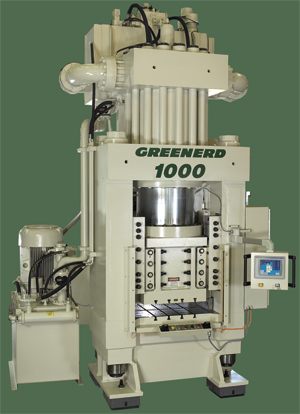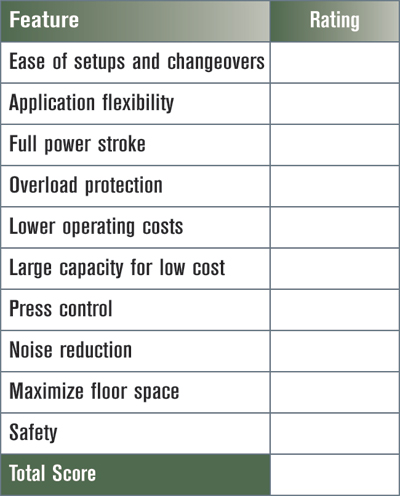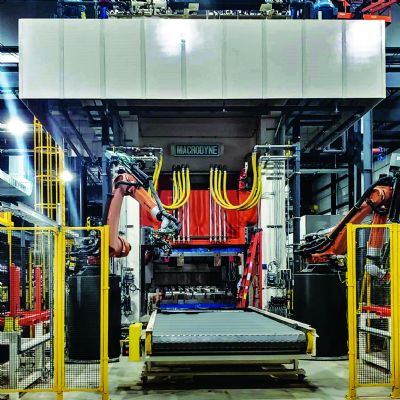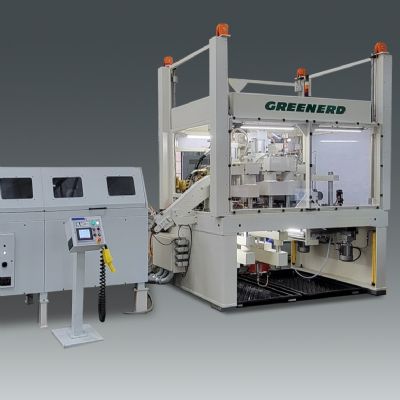3) Full Power at any Point in the Stroke
The full power of a hydraulic press can be delivered at any point in the stroke. That means not having to buy a 200-ton-capacity press to achieve 100 tons of force throughout the stroke. Other advantages include faster setups and no time-consuming adjustment of the stroke nut on the slide to accommodate different dies.
4) Built-in Overload Protection
Hydraulic presses provide built-in overload protection. For example, a 100-ton hydraulic press will exert only the specified tonnage—100 tons pressure if set for 100 tons, or less if set for less—no matter what mistakes are made during setup. This eliminates worries about overloading, or damaging the press or die. When a hydraulic press reaches its set pressure, a relief valve opens to ensure that no additional pressure is created and there is no danger of overload.
Built-in overload protection also applies to the tooling. Tooling built to withstand a certain load is in no danger of damage due to overloading—tools can be sized to withstand the load of a particular job, not a particular press. The pressure of the press can be lowered to suit the job, and the lack of impact, shock and vibration promotes longer tool life.
|
|
|
|
5) Low Operating Costs
Relatively simple design means that hydraulic presses can provide a significant cost advantage over mechanical presses in comparable sizes. Moving parts, few in number, remain fully lubricated in a flow of pressurized oil, and breakdowns are infrequent and usually minor. Typical routine maintenance tasks include replacement of packing, solenoid coils and, occassionally, a valve. These inexpensive parts are easily replaced without disassembling the entire machine, increasing uptime and decreasing maintenance costs.
6) Larger Capacities at Lower Costs
Metalformers can inexpensively purchase certain capacities in hydraulic presses. Stroke lengths of 12, 18 and 24 in. are common with extra stroke length provided relatively easily. Daylight, too, can be added without much additional cost. Hydraulic-press purchasers also can choose larger table areas and small presses with big bed areas—large 200-ton presses with relatively small beds are available as press tonnage does not dictate bed size.
7) Greater Control
With a hydraulic press, ram force, direction and speed, the release of force, and the duration of pressure dwell can be adjusted to fit a particular job. Jobs with light dies can be performed with reduced pressure—the ram can approach the work rapidly, then shift to a slower speed before contact, prolonging tool life. Timers, feeders, heaters, coolers and a variety of auxiliary functions can be brought into the sequence to suit the job.
8) Reduced Noise
Fewer moving parts and elimination of a flywheel reduce the overall noise level of hydraulic presses as compared to mechanical presses. Properly sized and mounted pumping units meet and exceed current federal standards for noise, even with the pumps under full pressure. Due to control of each phase of ram movement, noise levels also can be controlled—a hydraulic ram can be programmed to pass through the work slowly and quietly.
9) Optimized Space
Hydraulic presses feature a compact design—a typical 20-ton unit measures 8 ft. high, 6 ft. deep and 2 ft. wide while a 200-ton press measures only 10 ft. high, 9 ft. deep and a little more than
3 ft. wide. At 10 times the capacity, the 200-ton press only takes up 50 percent more room, optimizing pressroom floorspace.
10) Safety
Improperly used, all machines are potentially dangerous. But because hydraulic presses control ram movements, these presses easily can be made safe. Non-tie-down, anti-repeat, dual-palm button controls provide safety. And the nature of a hydraulic-press control system allows simple interlocking of guards and incorporation of other safety devices. MF
Information for this article provided by Greenerd Press & Machine Co., Inc., Nashua, NH. Tel. 603/889-4101; www.greenerd.com.
View Glossary of Metalforming Terms
See also: Greenerd Press & Machine Co.
Technologies: Stamping Presses










